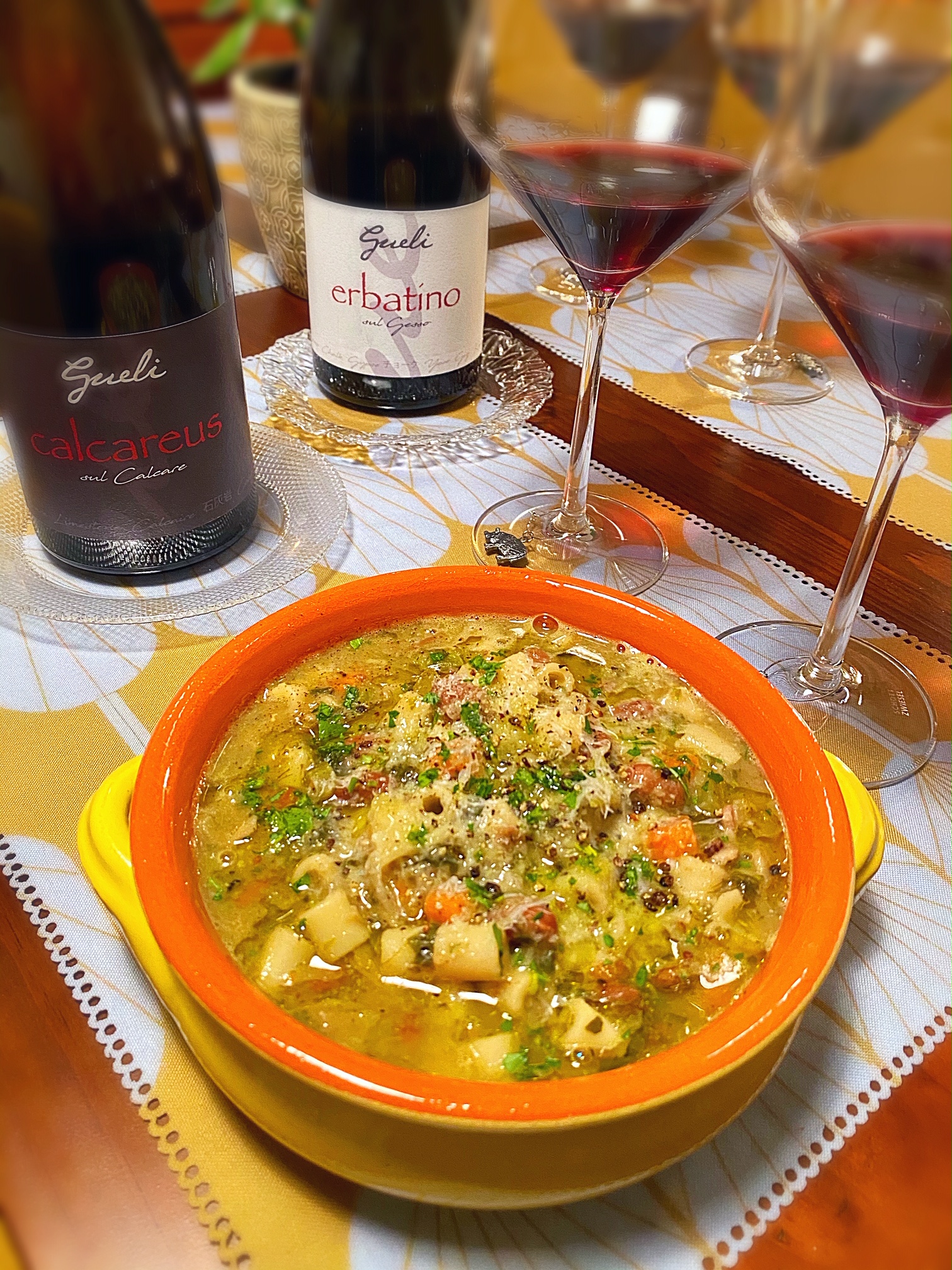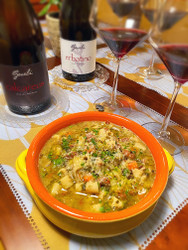Gueli
Posted by Stephan Lublin on October 19 2020 10:36am
Wine pairing - it’s often the theme of these articles, matching a particular wine that I know and love, or a wine I’ve been longing to try, with a dish that historically, or by theory, pairs well with said wine. Usually it works out splendidly, or at the very least I’m not too far off the mark, in my humble opinion. But with so many regional cuisines, and those even more specific to one small village or town, it’s possible to hone in a particular wine to a local dish that doesn’t really exist elsewhere. That’s what I wanted - to match what a winemaker is certain that his or her wine pairs best with based on their knowledge of their region, specific microclimate, usage of winemaking techniques, and local cuisine, and that’s what I set out to do.
The winery is Azienda Agricola Gueli in the countryside of Grotte, near Agrigento in Southern Sicily. Few wines are produced, but the ones that are are ultra-expressive and show an undeniable sense of place. The entry level wine, U’Russu is mainly Nero d’Avola with a small addition of local grape, Bianco Giovani. Aromas of ripe, popping berries and an irony minerality burst through the glass in such a wild and deliciously fresh manner that you can’t stop drinking it. The higher-end Calcareus and Erbatino cuvées are made identically, but from two different vineyard sites with different soils. Both are 100% Nero d’Avola manually harvested at the end of September, both have a 40 day maceration-fermentation by native yeast, both mature 24-30 months in 220 liter oak barrels, and both bottle age 6 months before their respective releases. Calcareus comes from limestone and clay soils, and Erbatino comes from chalky white soils that are said to be similar to talcum.That being their only difference, they are quite unique from each other and equally delicious. Calcareus is lighter, more focused and slightly more high-toned with medicinal cherry, autumn leaves, and peppery notes, and shows a medium body and tart cherry acidity on the palate. Erbatino is slightly richer and more giving initially with dark chocolate cherry, raspberry truffle, and light cured meat notes. On the palate the acidity is slightly lighter, but has grippier tannins than the Calcareus. Either way you go, you’re in for a treat, and trying side by side is your best bet.
But let’s not lose focus, I wanted to know how to pair these unique Nero d’Avolas, so asking winemaker Giussepe Gueli, who has the most intimate knowledge of these wines, the region, and local delicacies, was just the person to ask.
I was given three local dishes that are typical to marry with these wines. First, Minestra di San Giuseppe, a traditional soup in Sicily made on March 19th. Every local eatery will make this hearty vegetable based soup to feed the poor and hungry. Beans, especially favas in this corner of Sicily, along with lentils and bitter greens are a must, and in the cooler months, pancetta can be added to enrich the soup. In any case, plenty of local olive oil is drizzled on top before serving.
Recipe number two, Mpignulata Agrigento - a nearly-extinct filled pastry. A dough of flour, water, yeast, and extra virgin olive oil is mixed, then filled with a blend of Sicilian black olives, local pork, onions, black pepper, and additional olive oil. It is filled, brushed with egg wash and is baked, never fried, in this version. It’s said that its origins come from the Greeks and Turks and is not far off from a Borek.
Option three, local cheese Caciocavallo, from the venerated Podoliche cow, seems like the easiest pairing to create, but procuring this specific cheese was difficult in my neighborhood, so Minestra di San Giuseppe it is.
Favas are in season from late March to May, so I went with Borlotti beans, along with lentils, chard, broccolini, ditalini pasta, and the optional pancetta - these chilly October nights call for a little pork. Hearty, stick to your ribs, and completely satiating, this Minestra di San Giuseppe is really a perfect match to the wines, with the irony being that a soup meant to feed the poor marries perfectly with these super-elegant wines.
In the end, although both paired nicely, the win has to go to the Erbatino with the lighter acidity and lusher texture. But let’s be honest, the real winner is you, who tasted two incredible wines with clear expressions of place that show how soil and microclimates can affect grapes and the resulting wines, and matched it to a delicious Sicilian stew. Now it’s time to tuck in for the night and enjoy some much needed rest, for who knows what food and wine pairings await tomorrow. Buona notte.


